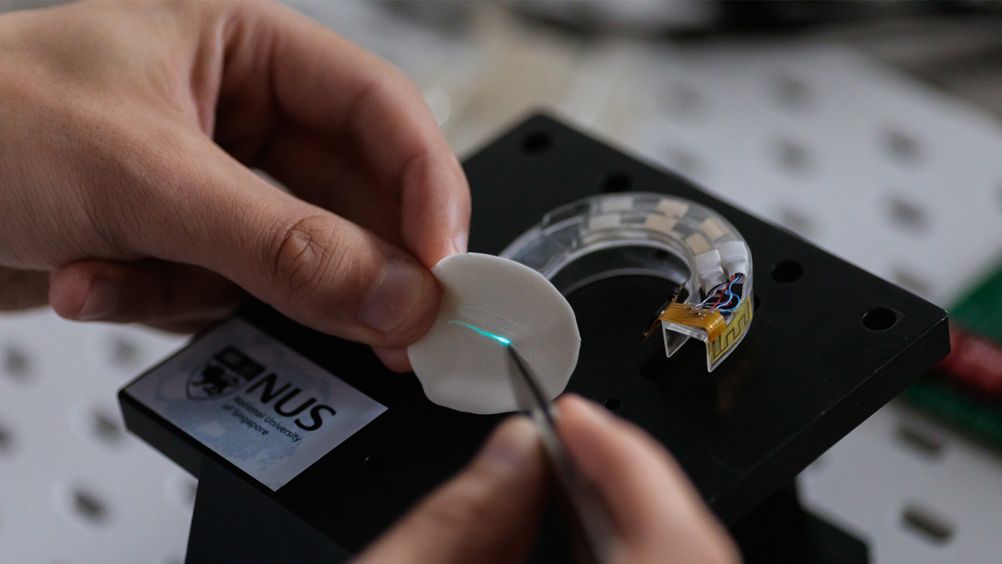Led by Professor Liu Xiaogang from the National University of Singapore (NUS) Department of Chemistry, the team claims to have created a first-of-its-kind bite-controlled optoelectronic system. Individuals who have limited hand function could use it to control devices such as computers, smartphones and wheelchairs.
Assistive technologies such as voice recognition, eye tracking and brain-computer interfaces have been developed in recent years to help people — especially those with limited dexterity or neurological disorders — control electronic devices.
However, the team pointed out that these technologies have limitations associated with environmental interference, control accuracy, cost and maintenance.
Voice recognition, for example, requires a large operating memory and needs to operate in a low-noise environment, while eye tracking requires a camera to be mounted in front of the user and is prone to fatigue. Although brain-computer interfaces have improved in recent years, this technology is invasive and requires cumbersome wired instruments.
Related content
Together with his team, including collaborators from Tsinghua University, Prof Liu designed and demonstrated the mouthguard which contains integrated pressure sensors to detect occlusal patterns.
According to the team, these patterns are translated into data inputs with 98 per cent accuracy and can be used to control gadgets. The findings are published in Nature Electronics.
Researchers described bite force, often used as a parameter to assess masticatory function, as a promising area that is not well understood or capitalised on. As dental occlusion provides high-precision control and requires minimal skill, Prof Liu and his team developed a new concept for assistive technology by utilising unique patterns of occlusal contacts.
They first designed a sensor comprising a series of contact pads containing different coloured phosphors — substances that emit light in response to pressure. The array of contact pads is placed within a flexible mouthguard.
Biting causes the contact pads to mechanically deform and emit light in different colours and intensities, which can be measured and processed using machine learning algorithms. The data collected is then used for high-accuracy remote control and operation of various electronic devices, such as a computer, smartphone and wheelchair.
Weighing about 7g, the novel mouthguard requires less training experience when compared to existing assistive technologies, the team said.

“We have also demonstrated that our novel sensors can distinguish mechanical deformations, including strain, compression and bending, making them applicable to multifunctional mechanical sensing applications, such as miniaturised force sensing, flexible electronics, artificial skin, and dental diagnosis,” said Prof. Liu.
Each smart mouthguard currently costs S$100 to produce in the lab, and the team expects the cost to be reduced ‘substantially’ in mass production.
Although the current prototype is designed for well-aligned teeth, a mouthguard with an irregular arrangement of phosphor-infused pads could be developed for users with different tooth patterns or individuals who wear dentures.
The team has filed a patent for the technology and is exploring opportunities to validate the device in a clinical setting. Researchers are also considering ways to enhance the technology, such as faster data processing and training.











Radio wave weapon knocks out drone swarms
Probably. A radio-controlled drone cannot be completely shielded to RF, else you´d lose the ability to control it. The fibre optical cable removes...